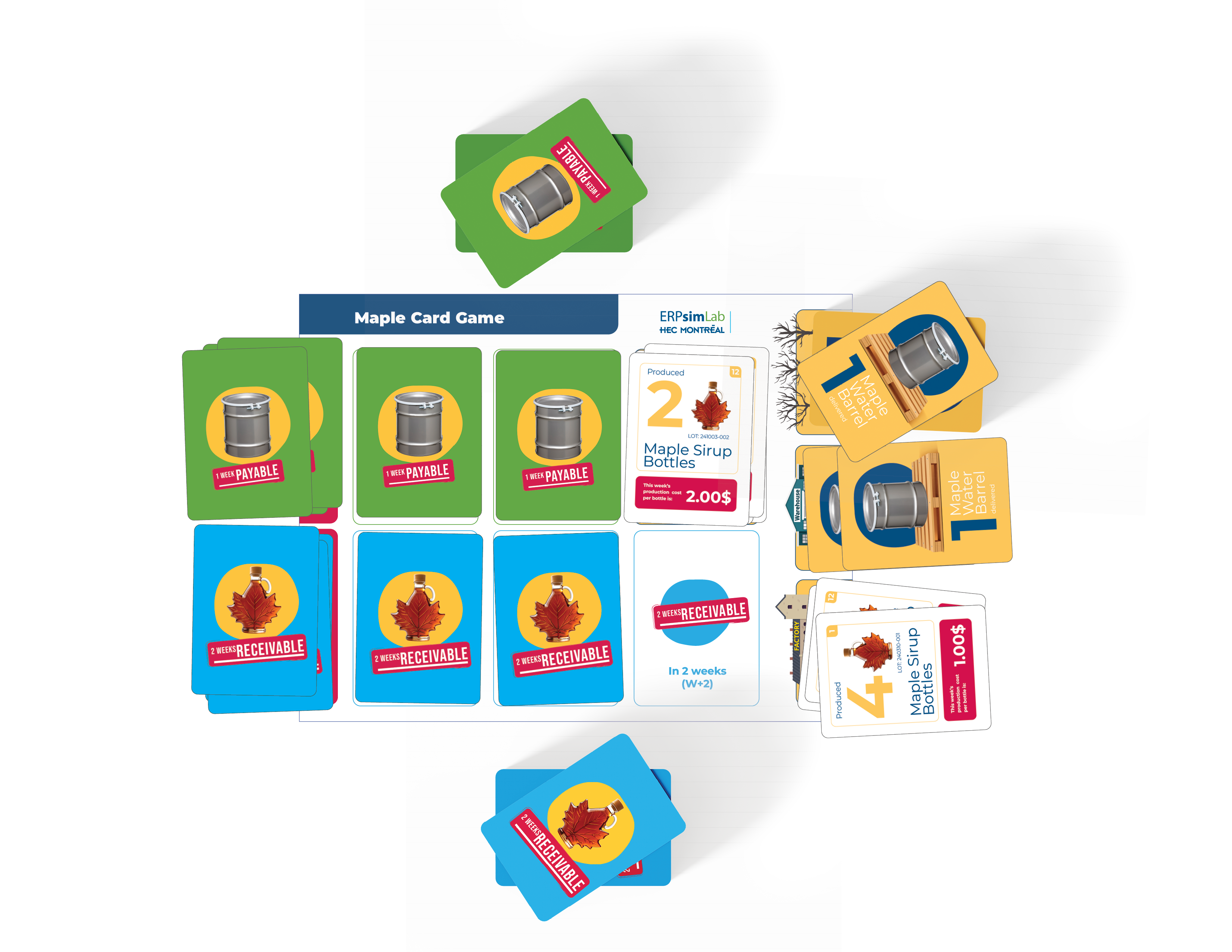The Maple Card Game helps students grasp core business processes through tactile gameplay and direct engagement. It shows the impact of enterprise systems on integrated business activities and introduces basic decision-making and accounting involved in buying and selling products.
The Maple card game can help you enrich your curricula by exposing students to a creative form of learning and introducing a fun element into the lessons.
Order your decks of cards now (offer reserved to faculty members)
Game Instructions
Goal of the game
For 10 weeks, work as a team to manage your company: buy maple water barrels, transform them into maple syrup bottles, sell them to customers, and keep track of your finances. At the end of the 10 weeks, you'll answer questions about your company’s performance!
Game Preparation
Assign Roles:
Separate roles between players and assign them their color-coded cards. There are 4 roles in this game:
Procurement Manager
(Green Cards)
Role: Must always have 3 green cards in hand, plays a card each week, and draws a new one.
Tasks Each Week:
- Decides with the team how many barrels to buy and send the green card to the Accounting Manager.
- Transfers the acquired barrels to the Production Manager.
Production Manager
(Yellow Cards)
Role: Manages the piles of yellow cards.
Tasks Each Week:
- Receives the barrels from the Procurement Manager and store them in the warehouse.
- Converts barrels to bottles by flipping the cards.
- Stores the bottles of finished products in the factory on the mat.
Sales Manager
(Blue Cards)
Role: Must always have 3 blue cards in hand, plays a card each week, and draws a new one.
Tasks Each Week:
- Decides with the team how many bottles of finished products to sell and sends the blue card to the Accounting Manager.
Accounting Manager
Role: Manages the cards around the mat.
Tasks Each Week:
- Keeps track of all financial transactions.
Decide on the Game Type
- Standardized Game: Arrange all cards in numerical order, using the number in the top-right corner of the card; this game type allows for a competitive experience with other teams using the same deck of cards, while maintaining comparability, because the market prices are consistent across all teams.
- Randomized Game: Shuffle all the cards; this game type allows for a competitive experience with other teams playing from another deck of cards. However, the market prices will be random across all teams, adding uncertainty to the game.
Game Mechanics
Each round represents a week and lasts a maximum of 3 minutes; the first round can be longer to allow players to learn the game, but the pace will pick up in subsequent rounds.
The game spans 10 weeks. Assign one player to keep track of time. Your company begins with $100 in cash available.
Weekly Operations:
Procurement (Green):
- Suppliers Capacity: The Procurement Manager reveals a green card and draws a new card.
- Team Discussion: Decide how many barrels to buy (between 0 and the maximum on the card). In this decision, the team must consider how many barrels to purchase based on the cost listed on the card and the team's current inventory.
- Transaction: The Procurement Manager gives the green card to the Accounting Manager, while the Production Manager selects the same number of yellow cards as the barrels purchased and places them in the warehouse on the mat.
- Payment: The transaction is recorded by the Accounting Manager by placing the green card face down on the mat in the payable section "1 Week Payable".
- Record: The Accounting Manager records the transactions in the accounting ledger using pen and paper.
Production (Yellow):
- Convert Barrels: The Production Manager decides how many barrels to transform into bottles by flipping the barrel cards located in the warehouse section of the mat into the factory section.
- Cost: The Production Manager records the production cost for each bottle produced in a production ledger using pen and paper.
- Immediate Payment: The cost is paid immediately.
- Record: The Accounting Manager tracks the transactions in the accounting ledger.
Sales (Blue):
- Reveal Market Price: The Sales Manager reveals a blue card and draws a new card.
- Team Discussion: Decide how many bottles to sell given the maximum quantity, the current price, and quantity the team has in inventory.
- Transaction: Sells the bottles (cannot sell more than what you have) by moving them from the factory area to the store area and give the blue card to the Accounting Manager.
- Payment: The Accounting manager places the blue card face down in the "2 Weeks Receivable" section.
- Record: The Accounting Manager tracks the transactions in the accounting ledger.
Repeat these steps for 10 weeks.
In a competitive game, the team with the highest profit at the end is the winner.
Example for 1 Week
Step 1: Setup
Arrange the cards and the mat as shown in the picture below.

Step 2: Buying Barrels
The Procurement Manager plays one of the green cards from their hand to reveal the supplier’s capacity, then draws a new card to ensure they always have 3 cards in hand.
The team decides to buy 2 barrels this week based on the information on the green card.
The green card is given to the Accounting Manager.
The Production Manager takes the top 2 cards from the yellow deck and places them face down in the warehouse section.
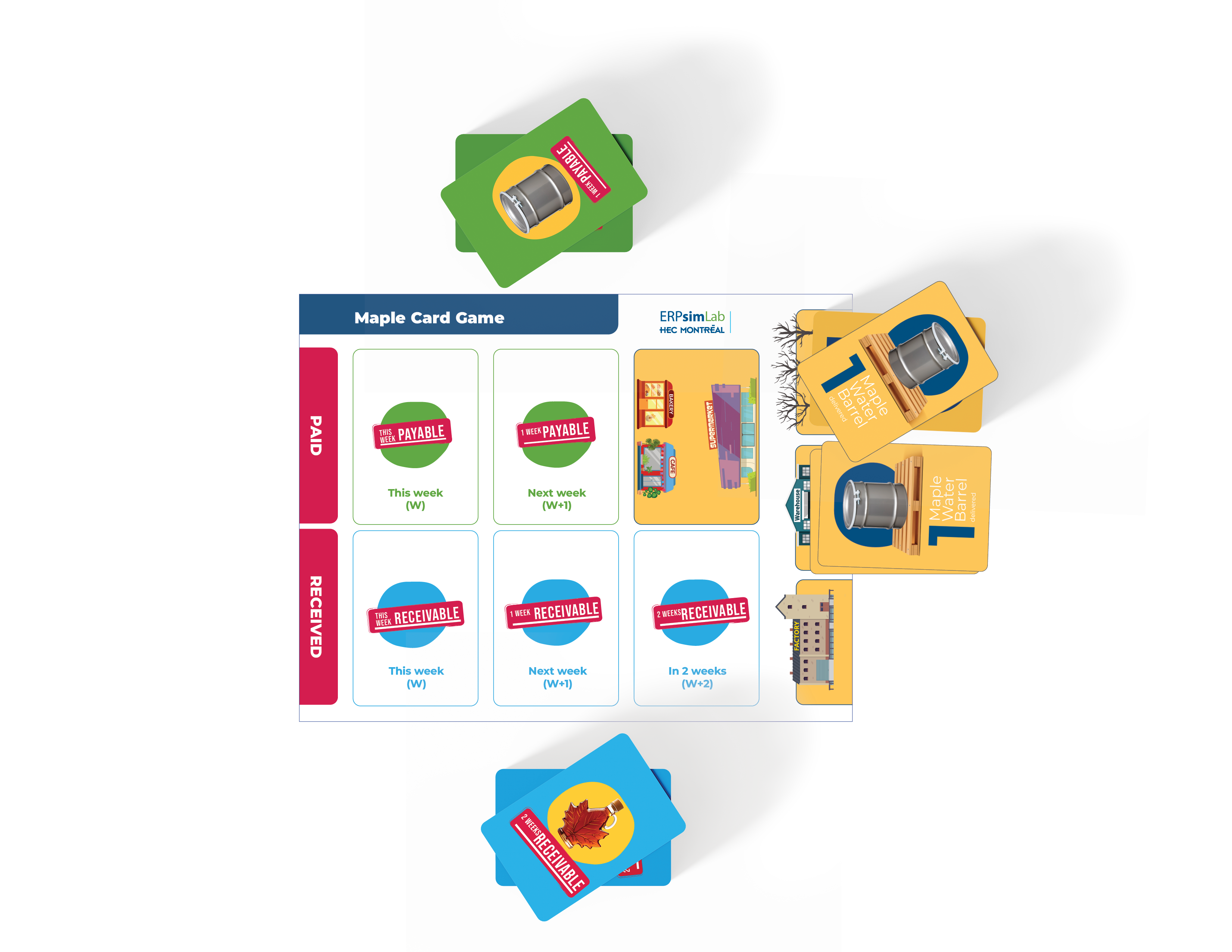
Step 3: Recording Purchase
The Accounting Manager places the green card face down in the "1 Week Payable" column on the mat and records the transaction in the accounting ledger.
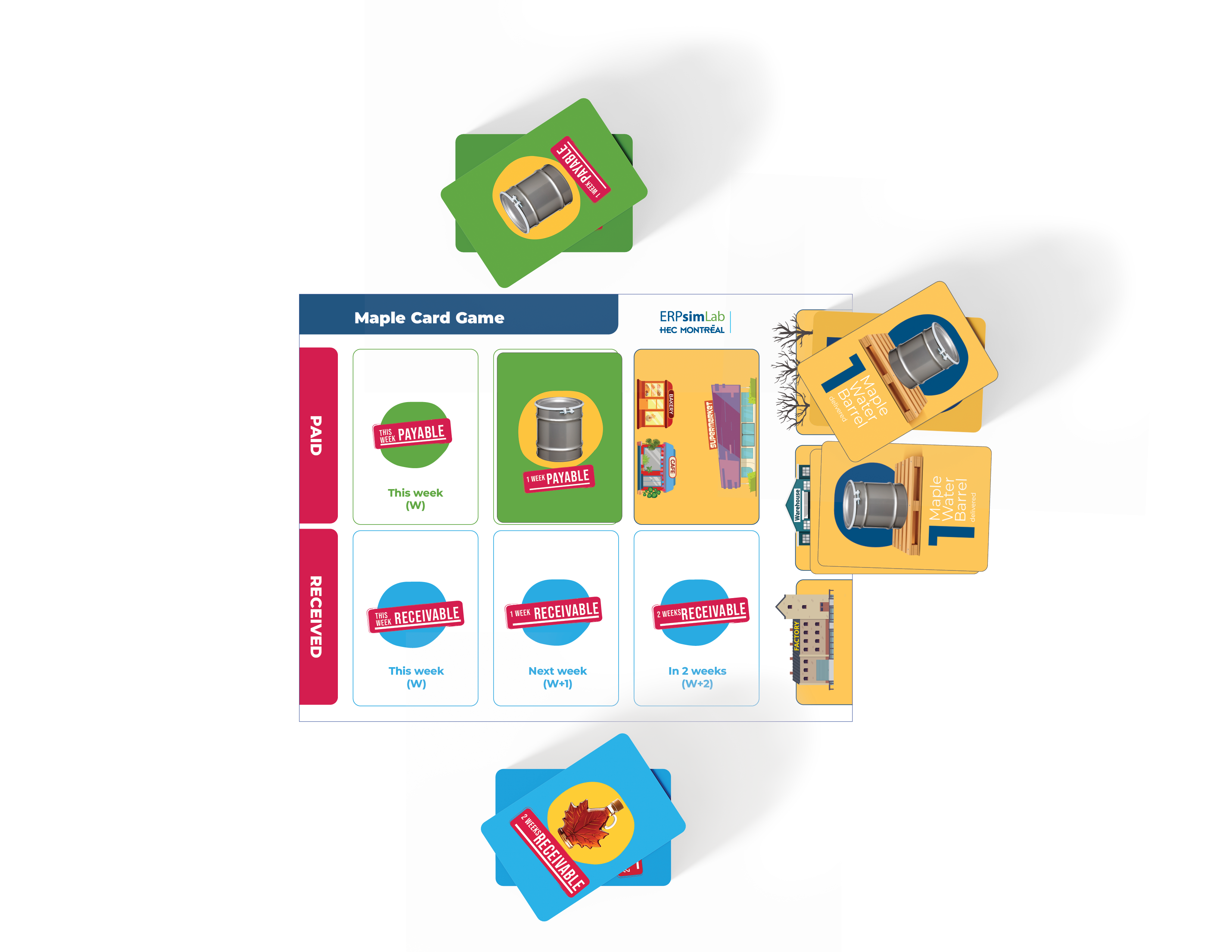
Step 4: Processing Barrels
The team decides to process 2 barrels this week to produce finished goods.
The Production Manager converts the barrels into bottles by flipping over the cards from the warehouse to the factory section of the mat.
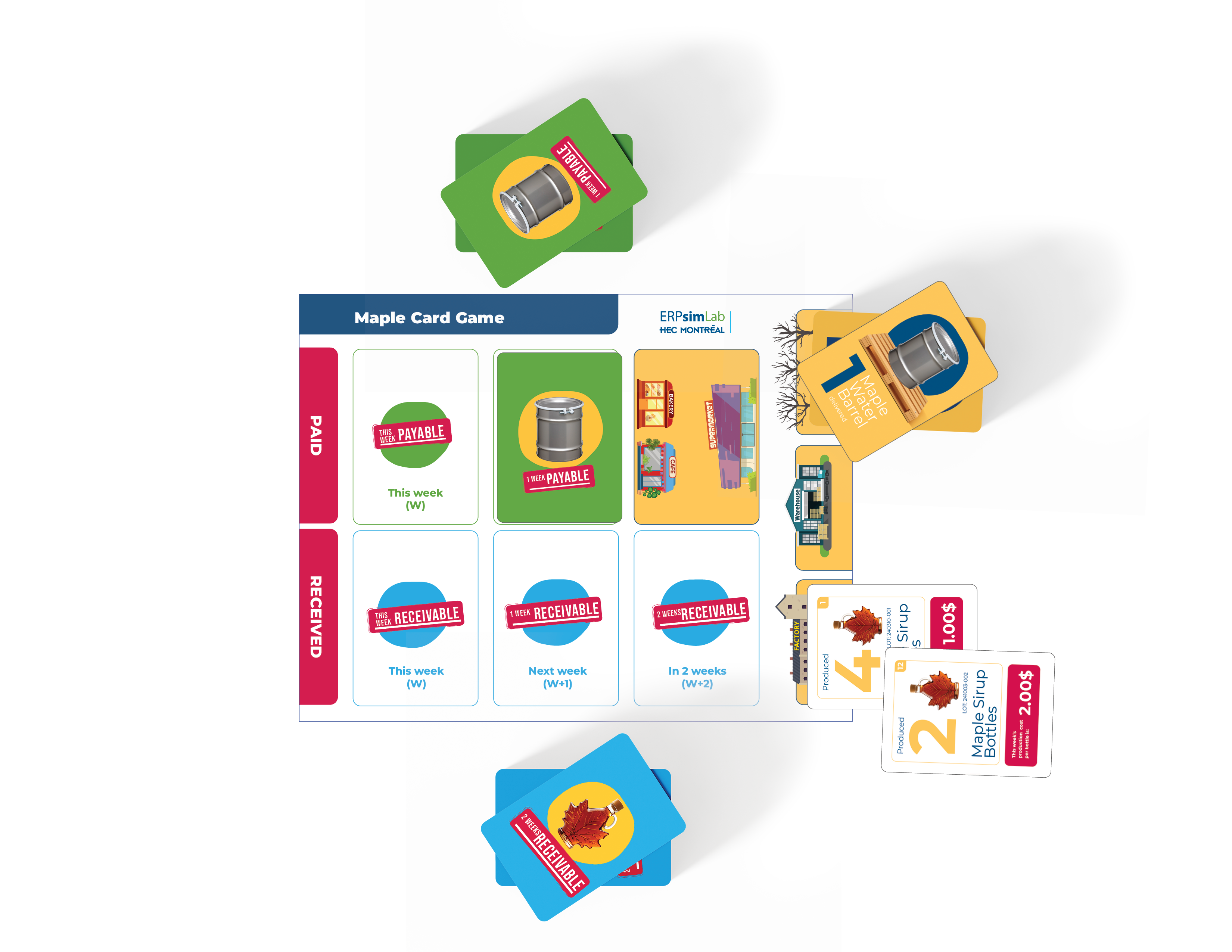
Step 5: Selling Bottles
The Sales Manager plays one of the blue cards from their hand to reveal the market price, then draws a new card to ensure they always have three cards in hand.
Based on the information on the selected blue card, the team decides to sell their entire finished goods inventory, which consists of 6 bottles.
The Sales Manager moves the sold bottles from the factory area to the store area on the mat.
The blue card is given to the Accounting Manager.

Step 6: Recording Sales
The Accounting Manager places the blue card face down in the "2 Weeks Receivable" column on the mat and records the transaction in the accounting ledger.
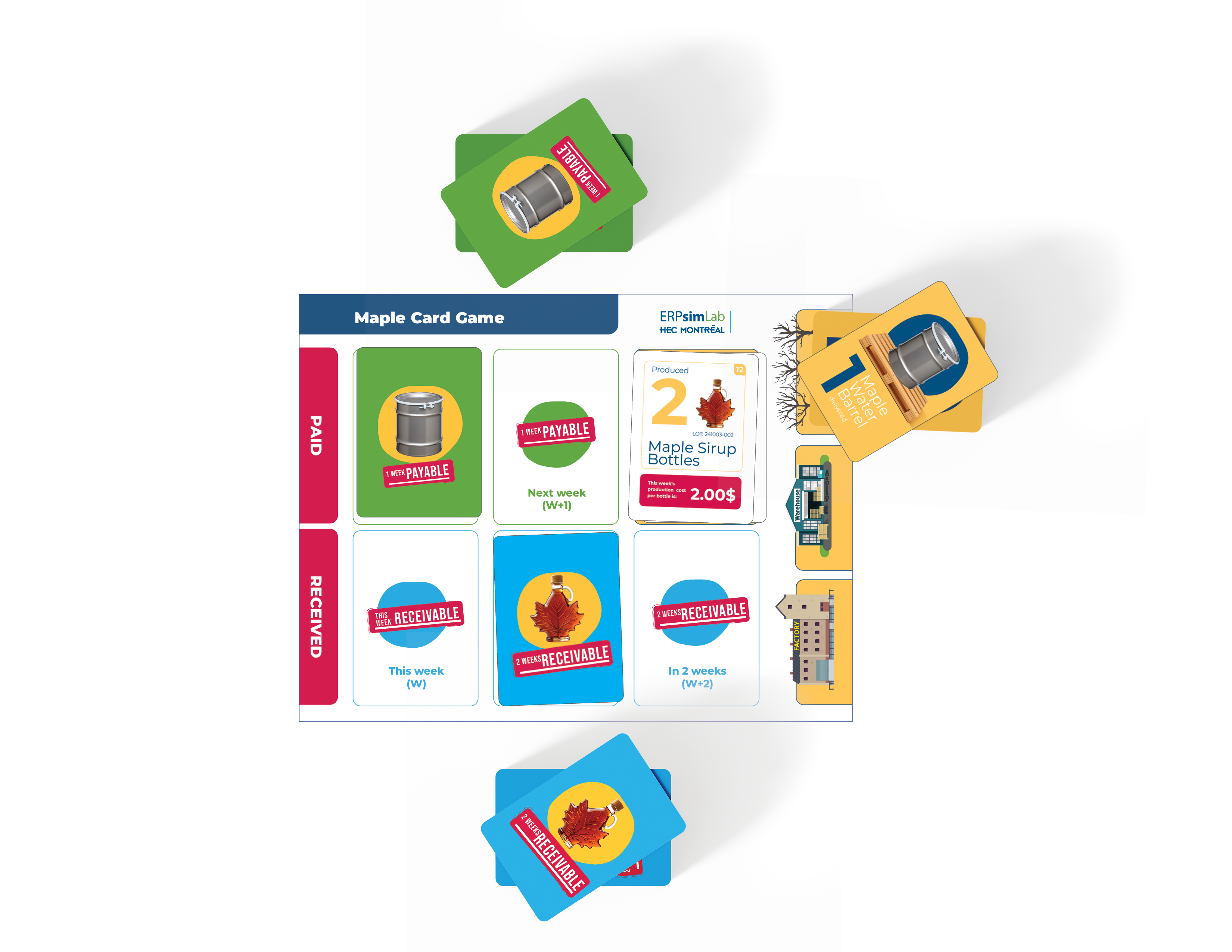
Step 7: Transition to the Next Week
The Accounting Manager shifts all payable and receivable documents to the left to indicate the transition to a new week.
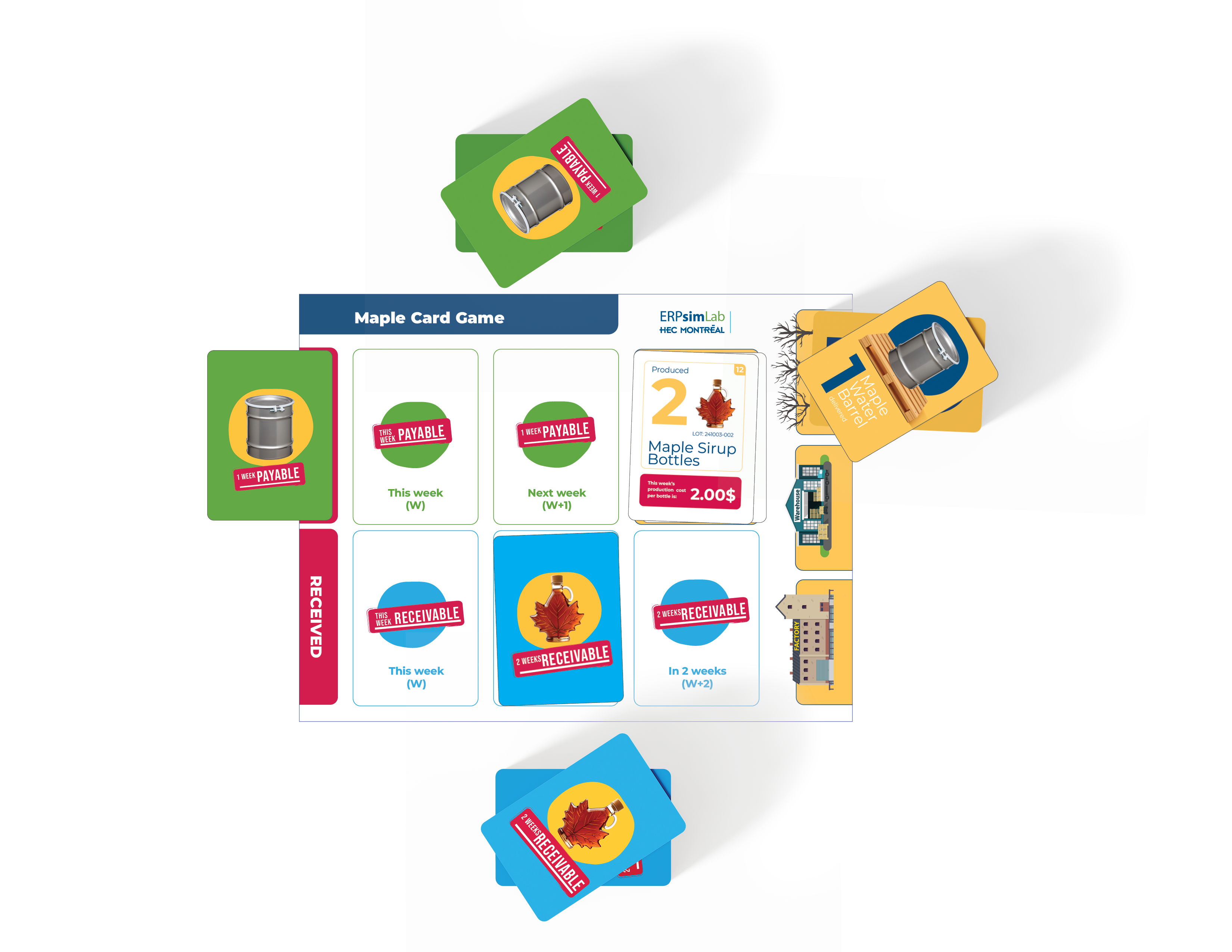
Step 8: Financial Transactions
Each player must verify their handwritten ledger to finalize the week's transactions. At this point, every player should be prepared to answer questions by the game master such as their current profit, receivables, production cost, inventory levels, and other relevant financial details.
Move the cards to the "PAID" or "RECEIVED" area as appropriate.
After 3 Weeks
This is an example of what the game board might look like after 3 weeks:
